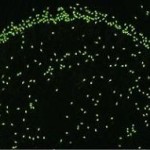This is for Gender Diet
If you would like assistance locating a clinic near you, click here to learn more about our worldwide clinic/doctor location service.
Community Stats: 140,491 members... 28,641 Questions answered!
 ScienceDaily (May 31, 2010) — Researchers at Yale School of Medicine have discovered a method to select sperm with the highest DNA integrity in a bid to improve male fertility. The method is comparable to that of the egg’s natural selection abilities, according to the study published in the June/July issue of the Journal of Andrology.
ScienceDaily (May 31, 2010) — Researchers at Yale School of Medicine have discovered a method to select sperm with the highest DNA integrity in a bid to improve male fertility. The method is comparable to that of the egg’s natural selection abilities, according to the study published in the June/July issue of the Journal of Andrology.
“Our results could help address the fact that approximately 40 percent of infertility cases can be traced to male infertility,” said the senior author of the study, Gabor Huszar, M.D., director of the Sperm Physiology Lab and senior research scientist in the Department of Obstetrics, Gynecology & Reproductive Sciences at Yale.
Huszar said that past semen analysis focused on sperm concentration and motility. It was assumed that if a man had a high sperm count and active sperm, that he was fertile. But there was no information on the sperm’s fertility or its ability to attach to its mark, the female gamete. In an ideal case, the egg naturally selects the optimal sperm, but during in-vitro fertilization treatment of men who had only a few sperm, clinicians did not know whether they were injecting the correct sperm into the egg for fertilization. “We have now found a biochemical marker of sperm fertility so that we can select sperm with high genetic integrity,” Huszar said.
Huszar and his colleagues tested the idea that binding sperm to hyaluronic acid selects sperm with high DNA integrity. They studied semen samples from 50 men, and a part of the sperm in the semen was allowed to bind to hyaluronic acid. These sperm were isolated, and the DNA chain integrity was compared to the original sperm in semen. The team used a reagent that stained sperm with high DNA integrity green, whereas sperm with fragmented DNA, and diminished DNA integrity were stained red.
“The sperm with fragmented DNA work like scratched CDs,” Huszar said. “They seem to be operational, but when you play them, some of the information is missing. These damaged sperm may also carry chromosomal aberrations that could be related to genetic diseases.” Huszar and his colleagues identified the nuclear and cytoplasmic attributes of various sperm. They also identified a key relationship between the ability of sperm to bind to hyaluronic acid and between high sperm genetic integrity, which enhances the sperm’s contribution to normal embryo development.
“When sperm is selected with hyaluronic acid binding, they are of comparable, if not better, overall quality than sperm chosen by the oocyte in the natural fertilization process,” said Huszar.
Disclaimer: This article is not intended to provide medical advice, diagnosis or treatment. Views expressed here do not necessarily reflect those of ScienceDaily or its staff.
[1] Yale University (2010, May 31). Researchers develop test to identify ‘best’ sperm. ScienceDaily. Retrieved December 8, 2010, from http://www.sciencedaily.com /releases/2010/05/100528211202.htm
Children born after a frozen, thawed embryo has been replaced in the womb have higher birth weight than those born where fresh embryos were used. The mothers had longer pregnancies, and the children did not show an increased risk of congenital malformations.
[1]The scientists studied all the 1267 children born in Denmark between 1995 and 2006 after frozen embryo replacement (FER). The children were divided into three groups; those born after cryo-preserved IVF (878), those born after cryo-preserved ICSI (310), and 79 where the method of creation of the embryos was unknown. During the same period 17857 children were born after IVF/ICSI treatment using fresh embryos, and these children were used as controls. Data on the children’s outcomes, including congenital malformations, were obtained from Danish national registries.
[1] European Society for Human Reproduction and Embryology (2008, July 8). Children Born From Frozen Embryos Weigh More And Do Better Than Those Born After Fresh Transfer. ScienceDaily. Retrieved December 6, 2010, from http://www.sciencedaily.com /releases/2008/07/080708080707.htm
Copyright © 2025 All Rights Reserved




